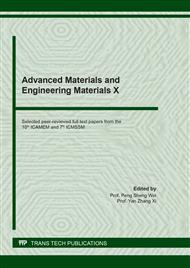p.124
p.131
p.137
p.143
p.148
p.154
p.161
p.167
p.174
Study on Mechanical Properties of Lost Foam Pattern in Machining
Abstract:
Lost foam casting has special requirements on the process performance of molding machinery, and the processing technology of Lost foam casting pattern is one of the core and key technologies of Lost foam casting. The research status of lost foam pattern and the safety problems existing in the process of lost foam casting were analyzed. The mechanical properties of lost foam pattern and its mechanical property model were studied, which provided theoretical support for the research of numerical control processing and safe casting of lost foam pattern. The development of Lost foam casting pattern NC processing technology is conducive to the use of information technology, digital technology to enhance the technological progress of traditional industries, promote the clean production of Lost foam casting, realize energy saving and emission reduction, and promote the rapid development of mechanical equipment manufacturing industry.
Info:
Periodical:
Pages:
148-153
Citation:
Online since:
November 2021
Authors:
Keywords:
Price:
Сopyright:
© 2021 Trans Tech Publications Ltd. All Rights Reserved
Share:
Citation:


